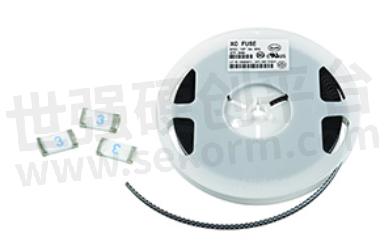What is the Function of Patch Self Recovery Fuses

For some industry newcomers, may not know the definition and function of patch fuses. patch self recovery fuses are used to protect electronic devices from damage in the event of circuit abnormalities, greatly reducing damage. A common fuse is a fusible fuse inside a light bulb, so what is a patch self recovery fuse? According to the literal meaning, it can automatically restore to a normal state. What is the function of a patch self recovery fuse? SMD self recovery fuse is a type of overcurrent electronic protection component, which is made of polymer organic polymers under high pressure, high temperature, and vulcanization reaction conditions, and is processed by a special process after adding conductive particle materials. SMD self recovery fuse is a positive temperature coefficient polymer thermistor that can replace current fuses.
The temperature during normal operation of the patch self recovery fuse is relatively low, achieving balance. When in a low resistance state, it does not work. When the current flowing through the patch self recovery fuse increases or the temperature rises, but the generated heat and emitted heat are still balanced, it still does not work. When the current or ambient temperature increases again, the patch self recovery fuse will reach a higher temperature. If the current or ambient temperature continues to increase at this time, the heat generated will be greater than the heat dissipated, causing the temperature of the patch self recovery fuse to suddenly increase. At this time, a small temperature change will cause a significant increase in resistance, and the patch self recovery fuse is in a high resistance protection state. After troubleshooting, it will quickly cool down and return to its original low resistance state, restarting work.
high temperature, and vulcanization reaction conditions, mixed with conductive particle materials, and processed through a special process. Self recovery fuse (PPTC: Polymer self recovery fuse) is a positive temperature coefficient polymer thermistor used for overcurrent protection and can replace current fuses. According to actual market demand, the self recovery fuses are divided into two types: patch self recovery fuse and plug-in self recovery fuse. The function of the patch self recovery fuse: During normal operation, the temperature is relatively low, and the heat generated and emitted reaches a balance. The PPTC component is in a low resistance state and does not act. When the current flowing through the PPTC component increases or the ambient temperature increases, but if the balance between the generated heat and the emitted heat is reached, the PPTC still does not act. When the current or ambient temperature increases again, the PPTC will reach a higher temperature. If the current or ambient temperature continues to increase at this stage, the generated heat will be greater than the dissipated heat, causing a sudden increase in the temperature of the PPTC component. At this stage, a small temperature change will cause a significant increase in resistance, and the PPTC component is in a high resistance protection state. After troubleshooting, the PPTC component quickly cools down and returns to its original low resistance state, allowing it to function again like a new PPTC component.

Fig.1
- +1 Like
- Add to Favorites
Recommend
- Self Recovery Performance and Working Process of Self Recovery Fuses
- Application of Overcurrent Protection for Self Recovery Fuses
- Guidelines for Selecting Self Restoring Fuses and Disposable Fuses
- Application Scope of Patch Self Recovery Insurance
- The Difference between Self Recovery Fuse and Blown Fuse
- Typical Applications of Self Recovery Fuses
- The Relevant Issues That Self Recovery Fuses Can Solve in Security Equipment
- How to Protect Circuits with Self Recovery Fuses
This document is provided by Sekorm Platform for VIP exclusive service. The copyright is owned by Sekorm. Without authorization, any medias, websites or individual are not allowed to reprint. When authorizing the reprint, the link of www.sekorm.com must be indicated.





























































































































































































































































































































































































































































































































































































































































































































































































































































































